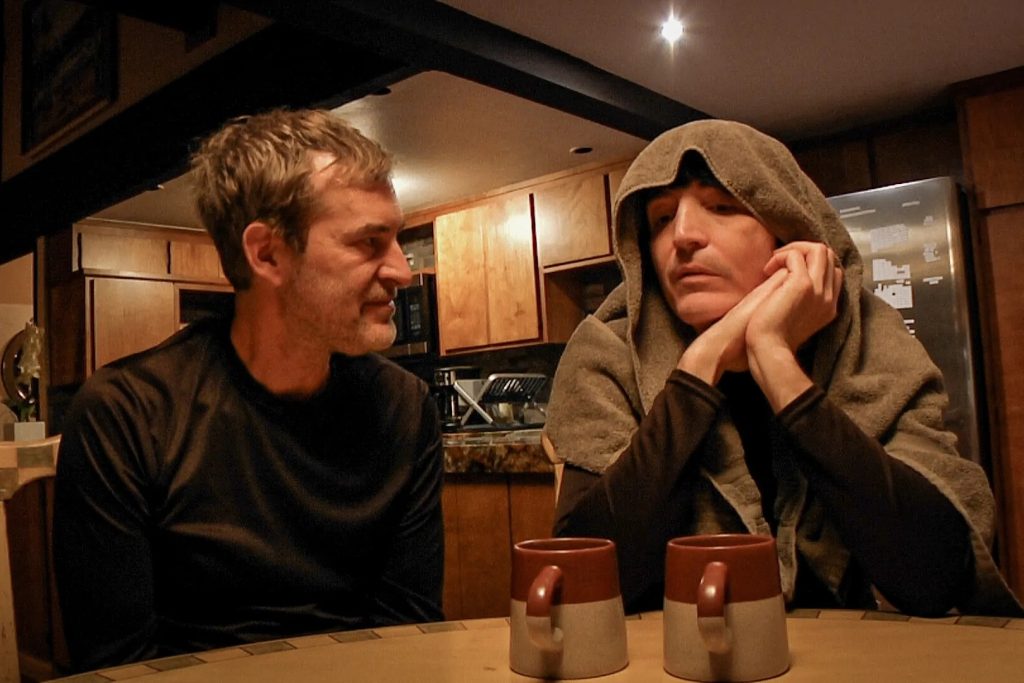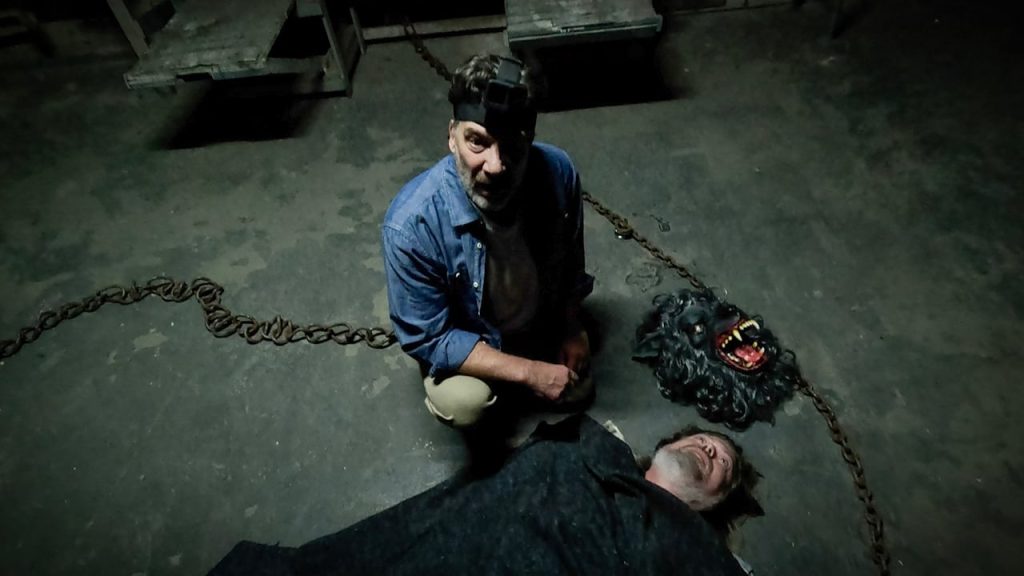TV
Costumes, Candy, and Cruelty: Chucky Season 1 Episode 2 “Give Me Something Good to Eat” Recap

Razor blades in treats? Unchaperoned teenage parties? A child dressed in a Chucky costume, playing Chucky, who in turn is playing a child? Oh boy, it’s a Halloween episode! A very dialogue-heavy one.
Despite it only being the second episode, there aren’t a lot of introductions of note. We get a look at Lexy’s verbally abusive mother, Mayor Cross, played by the actresses’ real mother, Barbara Alyn Woods. We also meet Michael Therriault, playing her well-meaning father, Nathan. I didn’t realize until my rewatch that Therriault had previously played notorious sleazebag, Doctor Foley, whose head was turned into a fruit gusher by Nica-Chucky’s high-heeled stomps in Cult of Chucky. Nice callback! But I do have a slight suspicion his inevitable death in this won’t nearly be as cool as that one.
Where this episode lacks anything particularly new or wild, it supplements with some interesting dialogue. It’s comprised of a lot of quiet conversations, rather than complex kills or set pieces; more than you’d expect from a show about a killer doll. This effort achieves varying levels of effectiveness: Devon and Jake’s conversation about losing their fathers seemed clunky and rushed for where it’s placed and how it’s scripted. On the other hand, Devon’s conversation with his mother is great at showing her uncomfortable inability to draw the line between her job as a detective and her role as a mother. And the episode structure gives some standout moments, specifically through conversations involving Junior.
The talk between Logan and Bree about the unsureness of raising the boys is strong. It’s amplified even more when you get to see Teo Briones playing Junior’s unsure reactions as he eavesdrops on it. It’s Logan appreciating Junior’s costume, not for its inventiveness but because it’s mostly just his own track and field medals, that really speak volumes about the slowly souring relationship between a doting father and the son he’s living vicariously through. And his snide interactions with Lexy, whether it’s asking for her to show Jake some sympathy or her preying on his emotional and sexual insecurities, have a genuine quiet tragedy to them that surprised me.
And in between, there are moments of Chucky playing videogames or doling out razor apples to unsuspecting neighbors. His presence feels a bit sparse for me, given it’s an episode with the concept of “Chucky runs wild on Halloween.”
However, his sidelining makes sense when you get to the real bombshell of the episode. Seeing Jake witness Lexy’s dead dad costume made my jaw drop the first time I saw it and still made me shrink back in my seat on a second viewing. It’s the exact kind of spur needed to make the audience eagerly anticipate Jake’s implied turn to Chucky’s homicidal call to action. And even if it is unlikely our protagonist will go mental and give in to the hate, this episode lends a believability that ups the ante for what’s to come in a way most shows don’t achieve.
PERFORMANCE HIGHLIGHTS: As I said, Teo Brione’s does so much with so few words of dialogue, it’s nutty. And I don’t think I’m ever going to confuse Alyvia Alyn Lind with her sisters again, given she’s seared herself in my brain as playing Lexy with such nastiness. The dialogue she’s given is cartoonishly evil at points, but she makes it work and creates a character you love to hate.
VISUAL HIGHLIGHTS: Annie’s death in this episode pales in comparison to Logan’s in the last, but it was still inventive and bloody enough to make me wince at her dishwasher demise. The episode’s set design of Hackensack at Halloween-time is also so perfectly autumnal.
QUOTE OF THE EPISODE:
“You know, I have a queer kid.”
“You have a kid?”
“Gender-fluid!”
“And you’re cool with it?”
“I’m not a monster, Jake.”
RATING: 7.5 (Instances of Apple Based Mouth Gore)/10. A drop off compared to the pilot, but I still like it quite a bit. The main plot is almost entirely a vehicle for its final few minutes, but that final quarter really is worth it. The character development moments are nice if not stilted at times, but I can accept the less thought-out ones since this is just an aperitif for seeing various characters growing bonds. Which is good because it absolutely succeeds at leaving you hooked and wanting more. It just may be its just a little too good at its job in that regard.
You can stream Chucky on Peacock!
TV
Brooklyn Horror Film Festival 2025: The Creep Tapes Season 2
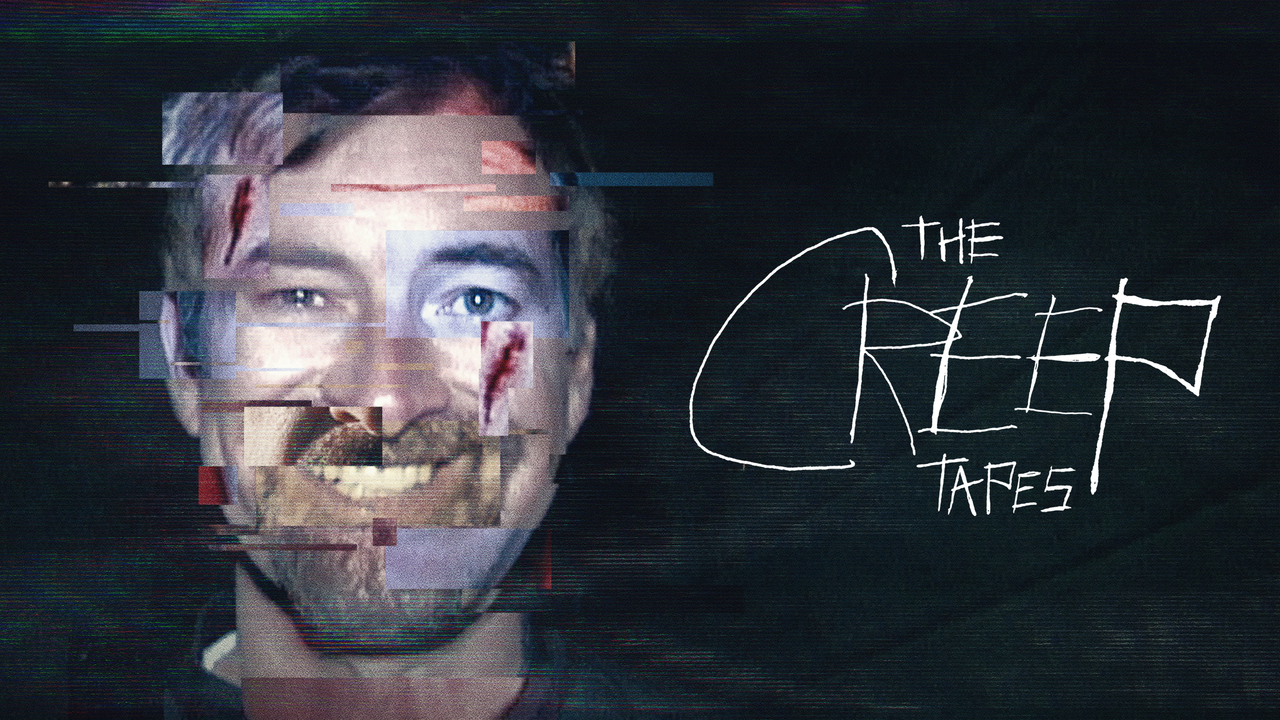
In 2014, Mark Duplass and Patrick Brice created magic with their mumblegore-adjacent found footage epic Creep. Three years later, this dreamy duo brought us the second installment of their creepy killer. Seven years would pass until Josef (Mark Duplass) would creep back into our daily lives with six truly terrifying episodes of The Creep Tapes. It would only be a short time until a second season of The Creep Tapes was announced…and even less time for a third season! The best experience I had at the Brooklyn Horror Film Festival was seeing the first three episodes of The Creep Tapes Season 2.
The Creep Tapes Season 2 Creeps Back Into the Spotlight
The Creep Tapes Season 1 was fairly straightforward throughout. It was a fantastic season (that I loved), but the majority of it was more of the same. Josef finds a victim (through various means), plays nice (and weird), goes after victim, and death. The season finale, “Mom (and Albert)”, was the first time we really got some (what seems to be) true background into Josef. From personal conversations, that episode was hit or miss. (I loved it, the dude hung dong!)
Upon hearing the news of Seasons 2 and 3, I was left wondering, will we get more background, OR will it just dive into Josef’s maniacal madness? While the first three episodes of Season 2 don’t do much to give us too much information about Josef’s background, it does up the ante considerably. Season 2 makes clear that Mark Duplass and Patrick Brice have grandiose ideas that they’re only scratching the surface of.
The Creep Tapes: S2 E1 “Joseph”
Imitation is the sincerest form of flattery, but what happens when the imitation is just… wrong? Josef finds himself in the sights of Joseph (David Dastmalchian), who is looking for a videographer to film a video for his unborn son, as Joseph has been diagnosed with cancer. Sound familiar?
How can someone possibly replicate the insane scenario Josef concocted in Creep? It can’t just be a coincidence—and it’s not. We come to learn that Josef has been doing something with his tapes (and films) that allows Joseph to view his work. Unfortunately for Joseph, the wrong man answered his ad.
This piece of information is crucial for understanding who (and what) Josef is. At points, he seems mentally ill, misguided, a man who just gets too damn lucky sometimes. The information gleaned reveals a much more careless, while still sophisticated, man who believes he’s creating art (of sorts). What’s the purpose of creating chaos in the modern age of technology if you can’t share it with other degenerates?
The “flip of the script” in Season 2 Episode 1 “Joseph” is a heart-racing 20-ish minutes of anticipation. I didn’t separate my butt from the edge of my seat until the credits rolled. But it’s with the casting of Joseph that the true magic of the Season 2 premiere excels. Who else can outmaniac a maniac? Of course, it has to be David Dastmalchian.
The Creep Tapes: S2 E2 “Mark”
Mark (Robert Longstreet) wakes up in a concrete room, his leg chained to the ground. A TV sits atop a table. An empty tub sits across the room. Someone lies still underneath a blanket, with a chain coming out of the bottom. And Josef accompanies Mark, leg chains and all. What could go wrong?
One of the most interesting things about Josef as a character is his ability to showcase his flaws, something that is extremely apparent in Season 2, Episodes 2 and 3. Nearly everything that can go wrong for Josef goes wrong. The reason it goes wrong is because of a simple oversight on Josef’s part. And it’s kind of heartening to see. Nearly every time we see Josef in action, he has a general grasp of his overall plan. He knows, more or less, how his targets will react, and his incredible improv skills allow him to course correct when necessary.
“Mark” just goes off the rails in ways Josef could never imagine.
Season 2, Episode 2 is Duplass and Brice’s nod at the Saw franchise. And, if anything other than a few laughs, solidifies the intense planning and expertise that goes into a John Kramer game. One simple oversight can cause a highly crafted plan to fall apart at the seams. To boot, “Mark” is one of the funniest pieces of horror media I have ever seen. It begs the question, what if an absolute dufus was put in a Saw film?
And don’t worry, bloodhounds, there’s gore aplenty!
The Creep Tapes: S2 E3 “Wes”
Wes (Diego Josef) finds himself taking a job to help Josef film a house-flipping show’s pilot episode. But night descends, and Wes realizes that they’re in the middle of nowhere. Wes’s attempted escape from Josef leads to an unfortunate run-in with law enforcement. Oh boy, how will he get out of this one?!
Even the greatest of franchises will bottom out at some point. Much of what we’ve seen Josef do involves a certain amount of suspension of disbelief. HOW is there not at least a Reddit thread about filmmakers/videographers who have gone missing after answering Craigslist ads? There is no way a 20/20 wouldn’t have been made about these killings if they were real. I mean, just look at how many tapes we see in the opening. Josef is talented at what he does, but everyone slips up eventually.
“Wes” brought me to a point where I was unable to suspend my disbelief. When AMERICAN police see someone moving a potentially dead body and don’t immediately cuff and detain them, you’re asking a bit too much. The crux of this episode revolves around a repeated word: “professionalism.” I get that it’s supposed to shine a light on how unprofessional the police are in this scenario, but it’s a step too far.
What I will say is that it’s a fun angle to take. We’re watching this killer that we’ve seen commit nearly 10 murders, and there are more we haven’t, interact face to face with the police. How will he get out of this sticky situation? I just don’t believe the way it is handled is grounded in a reality that would ever make sense. The chemistry between Wes and Josef, though, is some of the best in the entire franchise. They play off of each other incredibly well, and it makes you wish “Wes” were a feature-length film character instead of an episode character.
A Bold New Chapter for The Creep Tapes
Overall, the first three episodes of The Creep Tapes Season 2 were an overall blast. Even with the issues I had throughout “Wes”, I was entertained the entire time. “Joseph” and “Mark” are contenders for the best episodes of the entire series (and maybe even best entries in the entire franchise). I love seeing Mark Duplass and Patrick Brice spreading their wings to take Josef in different directions. They find ways to keep the product feeling original while still paying direct homage to horror properties beloved by the masses. If these are the first three episodes of Season 2, I think we’re in for a real treat with the final three.
The Creep Tapes Season 2 premieres November 14 on Shudder and AMC+.
TV
Is ‘It: Welcome to Derry’ Worth the Watch?
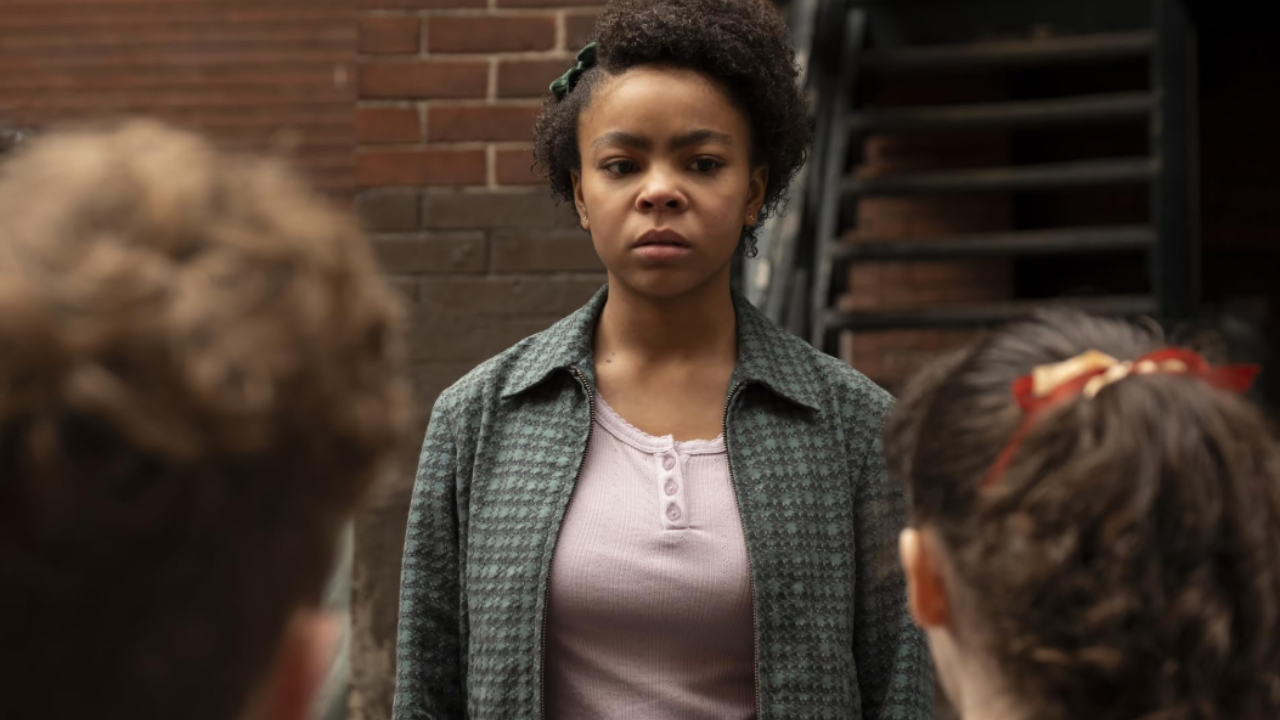
I loved It (2017) and politely refuse to talk about It Chapter Two. So, I have been impatiently waiting for It: Welcome to Derry to drop. I leaned in as soon as it was announced that Andy Muschietti, Barbara Muschietti, and Jason Fuchs were developing the prequel series for HBO Max. So, while I was denied screeners at the eleventh hour, I still tuned in Sunday night to see if it would live up to the hype. I found myself overall pleasantly surprised, despite having a couple of questions, comments, and concerns.
What’s Going On In Derry?
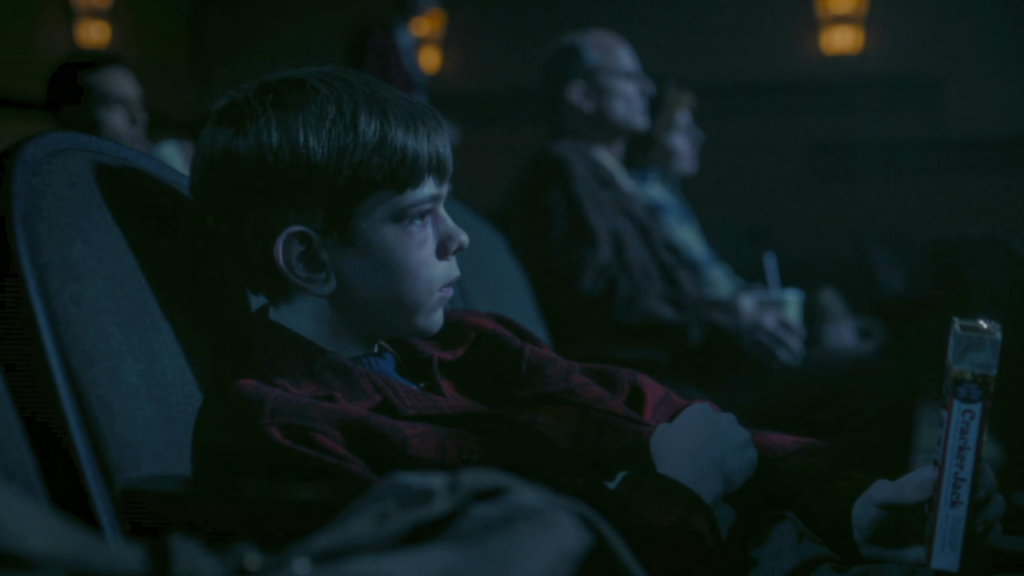
‘The Pilot’ takes place in 1962. We meet Matt Clements (Miles Ekhardt), a kid with a pacifier habit who loves to sneak into movies. He is caught in a showing of The Music Man and has to leave the venue. He makes the mistake of hitchhiking with a family that turns out to be the last time he is seen. The demonic car ride sets us up to know that kids are in danger in this series, and Matty is clearly not our lead.
Matty’s friends Teddy Uris (Mikkal Karim-Fidler) and Phil Malkin (Jack Molloy Legault) are still reeling from his disappearance. Teddy seems to be taking it the worst as everyone in town refuses to talk to him about it. Another kid taking this disappearance hard is Lilly Bainbridge (Clara Stack), who was on the brink of a possible friendship with Matt. She also has her own baggage, so when Matt’s voice and fingers make their way into her drain, she connects with his friends.
This leads them to form a kid gang to investigate, which includes Susie (Hunter Storm Baker) and Ronnie Grogan (Amanda Christie). As an audience, you assume this will be our core group. However, you know what they say about assuming and It: Welcome to Derry makes a bloody ass out of you and me. The ending is shocking, and the reason I will be tuning into the second episode.
Who’s Who?
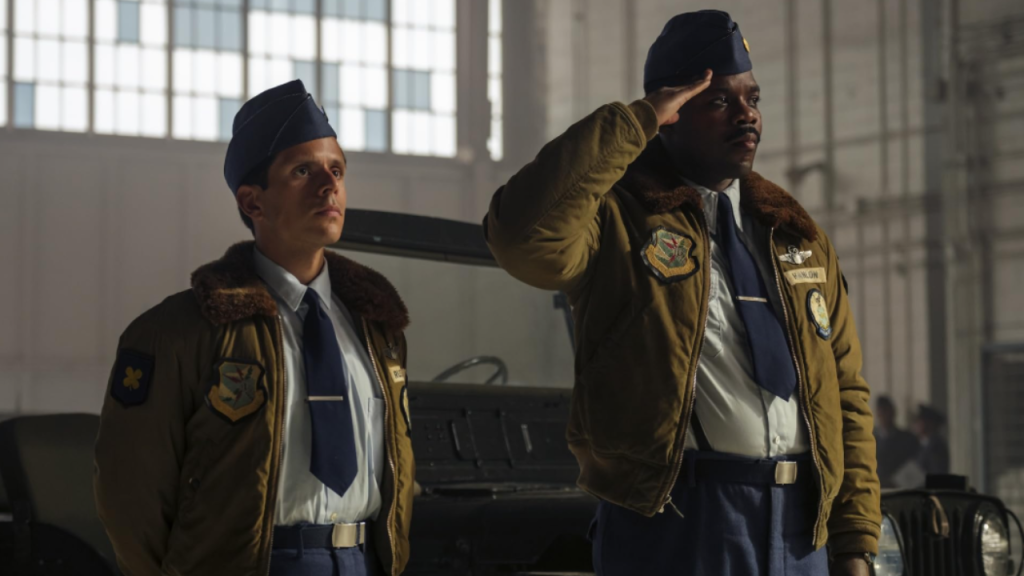
While we know Bill Skarsgård will be reprising the role of Pennywise, we do not see him in the first episode. Which is smart because you have to leave the audience wanting more. However, we do meet Leroy Hanlon (Jovan Adepo), who is the grandfather of Mike Hanlon. So, that’s a huge connection to The Loser’s Club we all know from the book and films. He’s experiencing racism at a military base and is ambushed by a weird group that he and his friend fend off. His story was sort of sidelined, so I’m waiting to see how it fully intertwines with what the kids got into. It’s still early yet, and whatever we think we know might not be the gospel. However, his wife Charlotte Hanlon (Taylour Paige) will also be getting screen time. I’m happy to see this because most King adaptations become overwhelmingly white cast affairs.
Speaking of Black characters from the Stephen King Universe getting more to do, young Dick Hallorann (Chris Chalk) will be involved in the story in some way. Constant Readers will remember Dick from The Shining. He was the Black character who also had “the shine’ and saved Danny and Wendy from the Overlook Hotel. In my least favorite adaptation, he is played by the late and great Scatman Crothers. Stanley Kubrick decided to axe the Black psychic character and perpetuate a trope with his version of King’s tale. A choice I still side-eye, and why I love to see this character in other iterations of the tale. So, I am very excited to see how he will fit into It: Welcome to Derry.
Am I Feeling It: Welcome to Derry?
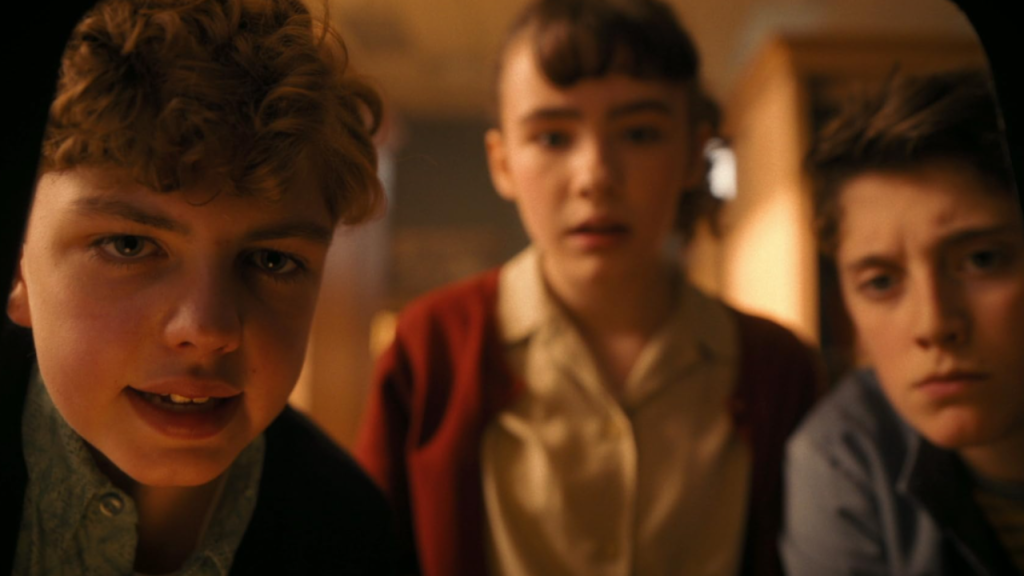
As a former Constant Reader and a lover of horror television, I’m an easy target for this show. While I think the pilot had a couple of things that don’t quite make sense (yet), I’m still leaning in. I am here for the vicious way children are dispatched, the surprising deaths, and for the expansion of one Stephen King’s most iconic baddies. So, I have a date with It: Welcome to Derry this weekend. I want to see where it goes now that most of the cast we were introduced to is dead. I also want to see Pennywise on the small screen to see if Skarsgård can creep us out again. More importantly, it is a fun and intriguing story, and that goes a long way with me.
It’s too soon to say if It: Welcome to Derry will be one of the best shows of the year. However, I have hope that it’s ramping up to be a good time. If it avoids falling into fan service territory and tightens up some of the story, this could be a damn good time. There is so much potential in this pilot. I cannot help rooting for it to find its footing and surprise us all. Sadly, hope is a dangerous thing, so I am so nervous it could be another fumble down the line. All I know is I plan to show up for the next two episodes and see where this all goes.
Watch the ‘It: Welcome to Derry’ Trailer



